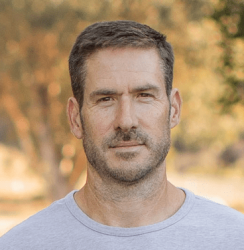It’s no secret that mortgage interest rates are no longer cheap.
In the first quarter of 2022, you can still get a 30-year fix in the 3% range.
Within a year, rates were pushing 8% before falling to around 6% in 2024 and then rising again to 7% in the run up to the election. It’s been a wild ride.
Today, the 30-year rate is around 7% for your typical loan scenario, but can be even higher for certain transactions such as a cash-out refinance.
To make matters worse, the typical homeowner already has a prime rate, so losing it could be a big mistake.
A cash-out refinance pays off your existing mortgage
Lately, I’ve heard more stories of people struggling financially. The easy-money days of the pandemic are in the rearview mirror.
There is no more stimulus and the prices of pretty much everything are much higher than they were a few years ago.
Whether it’s home owner insurance or even a trip to your favorite fast food restaurant, prices are not your friend right now.
This may have forced you to start relying on credit cards more recently, building up debt in the process.
And maybe you are now looking for a way to lighten the burden and reduce your interest expenses.
After all, credit card APRs are also through the roof, with typical interest rates pushing past 23% for those that are actually assessed interest, according to the Federal Reserve.
It’s clearly not ideal. No one should pay such high prices. It’s a no-brainer.
So it would be wise to eliminate the debt somehow or reduce the interest rate. The question is, what is the best strategy?
Well, some loan officers and mortgage brokers are pitching cash-out refinances to homeowners with high-interest debt without a mortgage.
But there are two big problems with it.
You lose your low mortgage rate in the process
When you apply for a refinance, whether it’s an interest and term refinance or cash-out refi, you lose your old interest rate.
In short, refinancing results in the old loan being paid back. So if you currently have a mortgage with an APR of 3% (or maybe even 2%), you’d be kissing it goodbye in the process.
Obviously, this is not a good solution, even if it means paying off all your other expensive debt.
Why? Because your new mortgage rate will likely be much higher, perhaps in the 6% or 7% range.
Sure, it’s lower than a 23% interest rate on a credit card, but it will apply to your ENTIRE loan balance, including the mortgage!
Let us e.g. say you qualify for a 6.75% rate on a cash-out refinance. It doesn’t just apply to the cash you withdraw to pay off the other debt. This also applies to your remaining home loan balance.
Now you have an even larger outstanding mortgage loan balance at a significantly higher mortgage interest rate.
Let’s pretend you initially took out a loan amount of $400,000 at 3.25%. Your monthly payment would be about $1,741.
After three years, the remaining loan balance would drop to about $375,000. Okay, you’ve made some progress.
If you refinance and withdraw, say $50,000, your new balance would be $425,000 and the new 6.75% payment would be $2,757!
So you are now paying an additional $1,000 a month toward your mortgage.
But wait, it gets worse.
Will you pay off the second debt in the next 30 years?
Not only did your monthly payment increase by $1,000, but you also combined the mortgage debt with your non-mortgage debt.
And depending on your new loan term, you might pay it off over the next three decades. It’s not exactly ideal.
Some lenders allow you to keep your existing loan term, so 27 years in our example. Others may only offer a new 30-year term.
In both cases, you will pay off the other debt much more slowly. If you just tried to tackle them separately, you might be able to cut it down a lot faster.
And remember, your mortgage is $1,000 higher per month. That money could have gone to the other debt.
Although the new all-in mortgage payment is lower than the combined monthly payments before refinancing, it still may not be ideal.
A better option might be to take out another mortgage, such as a home equity line of credit (HELOC) or a home equity loan.
Both of these options allow you to keep your first mortgage rate low while also using your equity to pay off other debt.
And the interest rates should be within the range of the payout refi rate. Maybe higher, but say something like 8% or 9% instead of 6.75%.
important, this higher rate would only apply to the payout portionnot the entire loan balance as it would with the cash-out refinance.
So yes, a higher rate on the $50,000 balance, but still the 3.25% (using our previous example) on the much larger balance, which should result in a much better compounded rate.
And it doesn’t reset the clock on your existing mortgage, allowing you to stay on track with your down payment goals.

